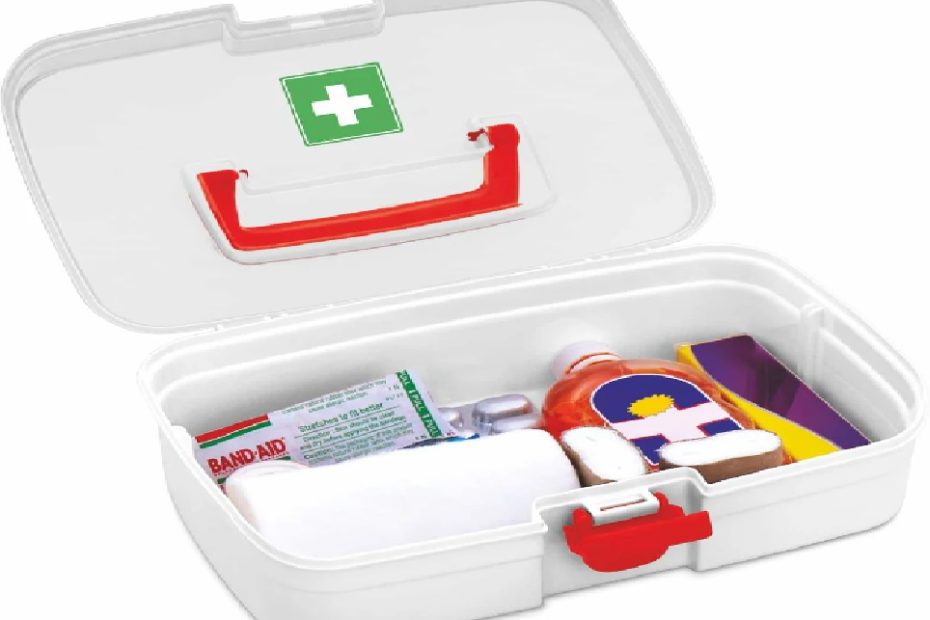Accidents and emergencies can happen anywhere and at any time. Whether you’re at home, work, or on vacation, having a well-stocked first aid kit can make all the difference in ensuring the safety and well-being of yourself and those around you. While pre-made first aid kits are available for purchase, it’s essential to understand what items should be included in a comprehensive kit to tailor it to your specific needs. In this blog post, we’ll provide a complete checklist for building your own custom first aid kit.
Basic First Aid Items:
Bandages in various sizes and shapes
Gauze pads and rolls
Adhesive tape
Antiseptic wipes or spray
Antibiotic ointment
Disposable gloves
Tweezers
Scissors
Instant cold packs
Elastic bandage wrap
Safety pins
Advanced First Aid Items:
Apart from the basic items, there are several advanced first aid items that you may consider adding to your kit. These include:
CPR Mask: A CPR mask is a crucial tool for performing cardiopulmonary resuscitation (CPR
Choosing the Right Container for Your First Aid Kit
Before diving into the must-have items for your first aid kit, start by selecting an appropriate container. This will ensure that everything stays organized and easily accessible when needed most. Consider these factors when selecting a container:
Size: Choose a container large enough to hold all necessary supplies but small enough to be portable.
Durability: Opt for sturdy materials like plastic or metal that can withstand regular use.
Accessibility: Select a container with compartments or dividers to keep everything organized.
Portability: Look for containers with handles or straps for easy carrying.
A hitman for hire is a person who is contracted to kill someone in exchange for money or other compensation.
Essential Items Every First Aid Kit Should Have
A well-stocked first aid kit should contain various items designed to address common injuries and illnesses. Here’s our comprehensive checklist of essentials:
- A) General Supplies:
Adhesive bandages (assorted sizes)
Sterile gauze pads (various sizes)
Adhesive tape
Antiseptic wipes
Tweezers
Scissors
Disposable gloves (non-latex)
Digital thermometer
- B) Medications:
Aspirin (for chest pain & heart attack symptoms)
Note: Always consult with your healthcare provider before introducing medication into your first aid kit
Ibuprofen (for pain relief and inflammation)
Acetaminophen (for pain relief and fever reduction)
Antihistamines (for allergic reactions)
Hydrocortisone cream (for rashes and itching)
Aloe vera gel or lotion (for sunburns)
- C) Specialized Tools & Materials:
Instant cold pack
Elastic bandage (such as an ACE bandage, for sprains & strains)
Space blanket (also known as a mylar blanket, for warmth in emergencies)
Triangular bandages (for slings, splints, or tourniquets)
- D) Information & Documentation:
Emergency contact information
Include phone numbers for family members, healthcare providers, and local emergency services
Personal medical information
List any pre-existing conditions, allergies, or medications taken regularly
First aid manual or instructions
Tailoring Your First Aid Kit to Your Specific Needs
While the previously mentioned essentials are crucial for every first aid kit, it’s important to consider your specific personal needs when building your own. Here are some areas to think about:
- A) Family Needs:
If you have young children or infants in your household, be sure to include items like pediatric fever reducers, children’s pain relievers, and child-safe antihistamines.
- B) Outdoor Enthusiasts:
For those who love spending time outdoors hiking or camping, consider adding items such as insect repellent, poison ivy/poison oak treatments, tick removers, and snakebite kits first aid and cpr course.
- C) Travelers:
If you frequently find yourself on the go or traveling internationally, include items like motion sickness medication and water purification tablets.
- D) Specific Medical Conditions:
If you or someone in your household has a specific medical condition like diabetes or asthma that requires medication or supplies not listed above add them into your kit as well.
Maintaining and Updating Your First Aid Kit
A first aid kit is only as useful as its contents, so it’s important to regularly check and update your supplies. Here are some tips for keeping your first aid kit in tip-top shape:
Regularly inspect expiration dates on medications
Replace expired items promptly
Check for damaged or used supplies
Replace torn, dirty, or otherwise compromised materials
Update personal medical information and emergency contacts periodically
Replenish any items used during an emergency promptly
Educating Yourself on Basic First Aid Techniques
Having a well-stocked first aid kit is vital, but knowing how to use the items it contains can make all the difference when responding to emergencies. Consider enrolling in a basic first aid course offered by organizations like the American Red Cross or St John Ambulance to learn how to handle common injuries and illnesses properly.
Conclusion: Building Your Own Comprehensive First Aid Kit
By following this complete checklist and tailoring it to your specific needs, you’ll be prepared to respond effectively to accidents and emergencies that may arise. Don’t forget to maintain and update your first aid kit regularly and consider taking a basic first aid course if you haven’t already. With these steps in place, you’ll be well-equipped with the knowledge and tools necessary to help keep yourself and those around you safe in times of need.
We encourage you to share this blog post with friends and family members who could benefit from building their own comprehensive first aid kits. If you have any additional suggestions for must-have items or tips on maintaining a well-stocked kit, please feel free to share them in the comments below! Stay safe out there!
Read more: https://startupsofindia.com/
